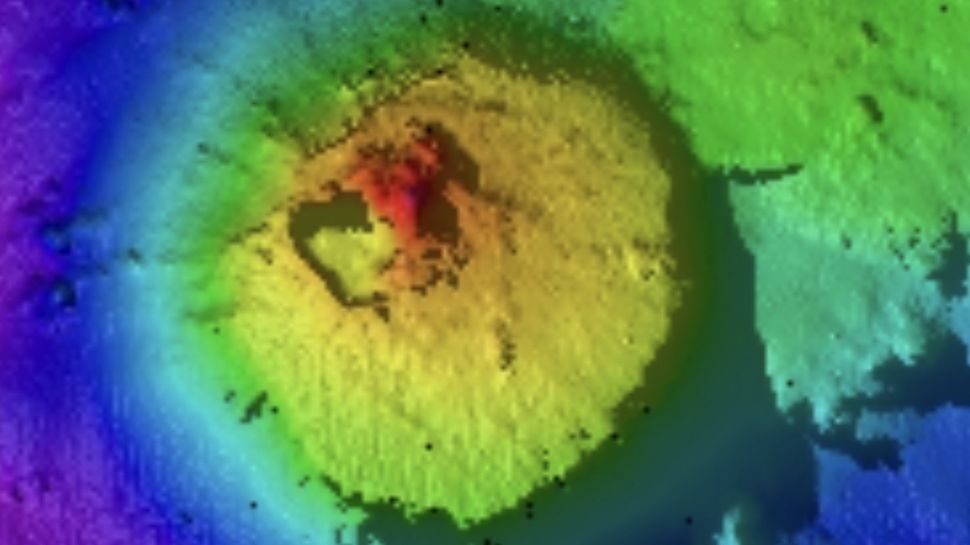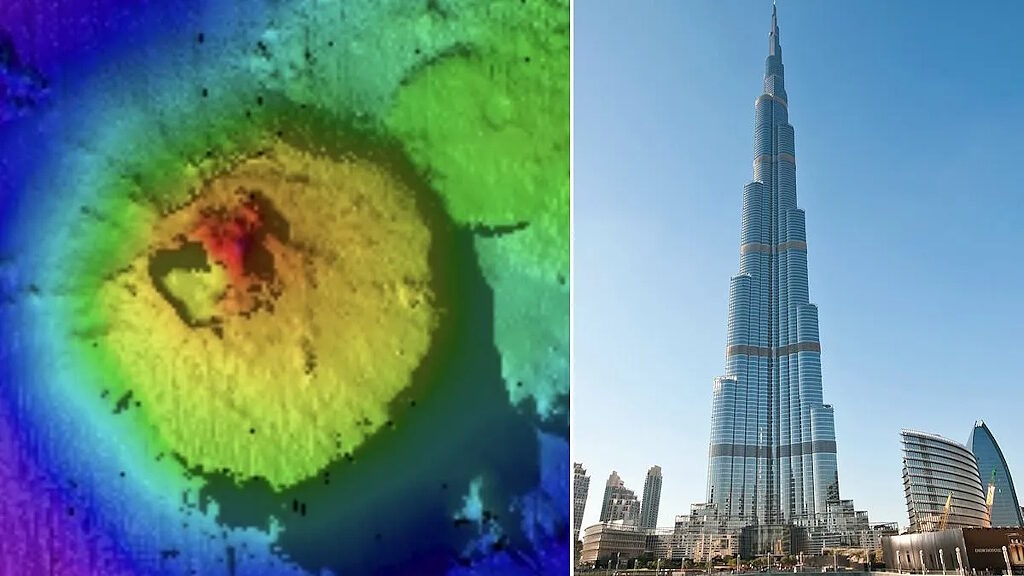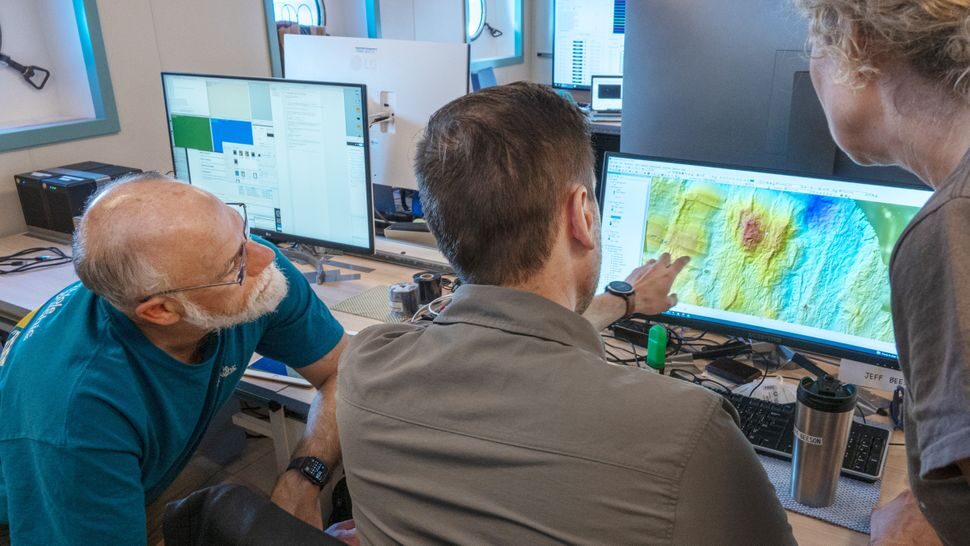
Ocean explorers mapping the seabed off the Pacific coast of Guatemala have discovered a mountain twice as high as the Burj Khalifa, the world's tallest building, hiding deep beneath the waves.
The 5,250-foot-tall (1,600 meters) formation is a seamount — a large, underwater geological feature typically formed from an extinct volcano. Scientists discovered the cone-shaped seamount 7,870 feet (2,400 m) below sea level during an expedition organized by the Schmidt Ocean Institute this summer, according to a statement shared with Live Science.
"A seamount over 1.5 kilometers tall which has, until now, been hidden under the waves really highlights how much we have yet to discover," Jyotika Virmani, the executive director of Schmidt Ocean Institute, said in the statement.

Seamounts provide crucial rocky habitats for deep-sea corals, sponges and a host of invertebrates, as hard substrate can be difficult to come by in the ocean, with the majority of the seabed covered in loose, muddy sediment.
"Seamounts can be too steep for mud to stick to, and some animals really thrive on the sides," Jon Copley, a professor of deep-sea ecology and ocean exploration at the University of Southampton in the U.K, previously told Live Science. "When one sticks up, it creates strong currents for filter feeders to grow up into the water and catch food."
Satellite data suggest there are more than 100,000 unexplored seamounts that will come to light through continued seafloor mapping. "A complete seafloor map is a fundamental element of understanding our ocean," Virmani said. "It's exciting to be living in an era where technology allows us to map and see these amazing parts of our planet for the first time!"

The latest find is "yet another breathtaking discovery," Jamie McMichael-Phillips, the director of the Seabed 2030 project, which aims to map the entire seafloor by the end of the decade together with the Schmidt Ocean Institute and other partners, said in the statement.
Sascha Pare is a U.K.-based trainee staff writer at Live Science. She holds a bachelor's degree in biology from the University of Southampton in England and a master's degree in science communication from Imperial College London. Her work has appeared in The Guardian and the health website Zoe.



Reader Comments
Whoopie freaking doo-doo...the worlds tallest building is measured in 1000's of meters - a seamount compared versus that is ridiculous.
~
PROPAGANDA
There are many things I've learnt whilst I've been away, they need to be put into context and rationalised but will in due course be released if appropriate.
That said, being a Pagan, Christmas ( proper understanding ) is being lived out.
So Ken another year has almost pasted, I wish you and your family a joyous festive Season and hope all is good your way.👍
So, reserve your energy, but know that there are those of us out here who hold you in high esteem - myself being one who does.
Ken
There is much that could be discussed but understanding what is happening is proving difficult given certain circumstances.
A word of caution, Earth's weather potential is becoming increasingly realised and normality? Will become no more.
But must be some relish in chaos cause they think they can "control it" - funny thing is, the few who think that always learn a hard lesson....always because chaos - just like uncertainty - cannot be controlled...
~
you know?
That is what I think.
Warmly,
Ken
I tirer of this nonsense.
Is our Earth fully mapped or not, I believe it is.
So such announcements are questionable.
Plus - the worlds tallest building - I guess it is less than even 1000 m's - but without reference compared to other seamounts, the whole comparison is meaningless....moreover to say "hidden under the waves" is redundant.
~
So I query - what does it take to get: My guess is it might help if you have a pretty face, and nothing wrong with that, but this doesn't seem to be good scientific writing.
~
BK
Are we scared yet?
What the hell is there to be scared of...